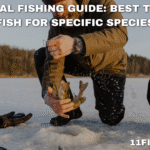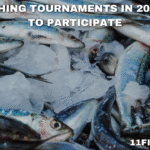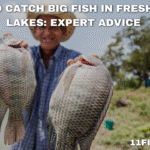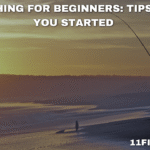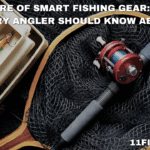Fly fishing is a captivating and rewarding sport that combines skill, patience, and a deep connection with nature. Whether you’re drawn to the serene beauty of a mountain stream or the thrill of landing a feisty trout, fly fishing offers a unique experience for anglers of all levels. If you’re new to this artful form of fishing, this guide will walk you through the essential tips and gear you need to get started and make your first fly fishing adventure a success.

What is Fly Fishing?
Fly fishing is a method of angling that uses a lightweight lure (called a fly) to mimic insects, baitfish, or other prey. Unlike traditional fishing, fly fishing relies on the weight of the line to cast the nearly weightless fly, requiring specialized techniques and equipment.
Essential Fly Fishing Gear for Beginners
Fly Rod
A 9-foot, 5-weight rod is the most versatile choice for beginners.
Ideal for trout fishing in rivers and streams.
Fly Reel
Choose a reel that balances well with your rod and has a smooth drag system.
Fly Line
Weight-forward floating line is the best option for beginners.
Matches the weight of your rod (e.g., 5-weight rod = 5-weight line).
Leader and Tippet
A 9-foot tapered leader is a good starting point.
Tippet (thin line) is used to extend the leader and attach the fly.
Flies
Start with a basic selection of dry flies, nymphs, and streamers.
Popular beginner flies: Adams (dry fly), Woolly Bugger (streamer), and Pheasant Tail (nymph).
Accessories
Polarized Sunglasses: Protect your eyes and help you see fish underwater.
Vest or Pack: Keeps your gear organized and accessible.
Nippers and Forceps: For cutting line and removing hooks.
Basic Fly Fishing Techniques
Casting
Overhead Cast: The most common cast for beginners.
Hold the rod with a firm but relaxed grip.
Use a smooth motion to bring the rod back and then forward.
Stop the rod abruptly at the 10 o’clock position to let the line unfurl.
Practice in an open area before hitting the water.
Reading the Water
Look for areas where fish are likely to feed, such as:
Riffles: Shallow, fast-moving water with oxygen-rich pockets.
Pools: Deeper, slower-moving water where fish rest.
Eddies: Circular currents created by obstacles like rocks.
Presenting the Fly
Dry Fly Fishing: Cast the fly onto the water’s surface to mimic insects.
Nymphing: Submerge the fly to imitate underwater insects.
Streamer Fishing: Retrieve the fly in short bursts to mimic small fish.
Setting the Hook
When you see a fish strike or feel a tug, gently lift the rod tip to set the hook.
Avoid jerking the rod, as this can pull the fly away from the fish.
Tips for Success
Start Small
Begin with smaller, easier-to-fish waters like streams or ponds.
Learn from Others
Consider hiring a guide or taking a class to learn proper techniques.
Be Patient
Fly fishing requires practice and persistence. Don’t get discouraged if you don’t catch fish right away.
Observe the Environment
Pay attention to insect activity and fish behavior to choose the right fly.
Practice Catch and Release
Handle fish gently and release them quickly to ensure their survival.
Common Mistakes to Avoid
Overcasting: Trying to cast too far can lead to tangles and frustration. Focus on accuracy over distance.
Using the Wrong Fly: Match your fly to the insects or baitfish in the area.
Ignoring Stealth: Fish are easily spooked, so approach the water quietly and avoid casting shadows.
Why Fly Fishing is Worth It
Fly fishing is more than just a way to catch fish—it’s a way to immerse yourself in nature, challenge yourself, and enjoy moments of tranquility. With the right gear, techniques, and mindset, you’ll soon discover why this sport has captivated anglers for generations.
Final Thoughts
Fly fishing may seem intimidating at first, but with practice and patience, it becomes an incredibly rewarding pursuit. Start with the basics, invest in quality gear, and don’t be afraid to ask for help. Before long, you’ll be casting like a pro and creating unforgettable memories on the water.
Pro Tip: Join a local fly fishing club or online community to connect with other anglers, share tips, and learn from their experiences.

